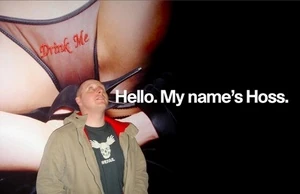No edit summary |
Azurelunatic (talk | contribs) m (Protected "Male gaze": Excessive vandalism ([edit=autoconfirmed] (expires 22:18, August 21, 2016 (UTC)) [move=autoconfirmed] (expires 22:18, August 21, 2016 (UTC)))) |
||
| (28 intermediate revisions by 24 users not shown) | |||
| Line 1: | Line 1: | ||
| + | <blockquote>Maybe the most feminist thing about Buffy is the near-total lack of a male gaze. Buffy, Willow, and Anya are all very attractive, but they are never ogled. Their clothes are casual and practical, and the camera doesn't linger on their bodies. There's no particular effort at modesty, but you know how when many shows introduce a particularly good-looking female character, there'll be a little "va va voom, fellas" shot, a sweep up her body or a shot of her flipping her hair in that apparently irresistible way? Buffy doesn't go for that shit. Not that Buffy et al. aren't sexy, but they're sexy in that unconscious way that men on TV so often are. They're sexy while they go about their lives, rather than stopping to be sexy at the camera. -- [http://pervocracy.blogspot.se/2009/08/buffybuffybuffybuffy.html Cliff Pervocracy: Buffybuffybuffybuffy!], 2009</blockquote> |
||
| − | girls have biger dicks than men |
||
| + | [[File:Hellohoss.jpg|300px|thumb|right|Hoss's first slide from the presentation]] |
||
| + | The '''Male gaze''' means a quality of a visual work, where the audience is put into the perspective of a (heterosexual) man. It emphasizes and focuses on aspects considered interesting, pleasing, titillating to the assumed viewer (for instance, zeroing in on a female character's derrière as she walks away from the camera), and averting aspects considered awkward or uninteresting to the assumed viewer (for instance, zeroing in on a male character's derrière as he walks away from the camera). |
||
| + | The term is discussed by Laura Mulvey in her essay, "Visual Pleasure and Narrative Cinema" (1975). It is used to describe when female characters are sexualized, and the camera may zero in on female body parts considered sexual. This takes after the psychoanalytical term brought into popular usage by Jacques Lacan |
||
| + | ;Quick litmus test |
||
| + | * Consider a visual work or an excerpt of such. |
||
| + | * Imagine a gender-flipped version. |
||
| + | == Further reading == |
||
| − | Girls are bigger cunts than men. |
||
| + | * [http://en.wikipedia.org/wiki/Gaze#The_.22male_gaze.22_in_feminist_theory Wikipedia: The "male gaze" in feminist theory] |
||
| − | |||
| + | * [http://finallyfeminism101.wordpress.com/2007/08/26/faq-what-is-the-%E2%80%9Cmale-gaze%E2%80%9D/ FAQ: What is the male gaze?] at "Finally, a Feminism 101 blog" |
||
| − | |||
| − | As seen above: Buttmad faggot is jelly he has a smaller dick than the feminists. |
||
[[Category:Concepts]] |
[[Category:Concepts]] |
||
| + | [[Category:Sexualized environment]] |
||
Latest revision as of 22:18, 21 February 2016
Maybe the most feminist thing about Buffy is the near-total lack of a male gaze. Buffy, Willow, and Anya are all very attractive, but they are never ogled. Their clothes are casual and practical, and the camera doesn't linger on their bodies. There's no particular effort at modesty, but you know how when many shows introduce a particularly good-looking female character, there'll be a little "va va voom, fellas" shot, a sweep up her body or a shot of her flipping her hair in that apparently irresistible way? Buffy doesn't go for that shit. Not that Buffy et al. aren't sexy, but they're sexy in that unconscious way that men on TV so often are. They're sexy while they go about their lives, rather than stopping to be sexy at the camera. -- Cliff Pervocracy: Buffybuffybuffybuffy!, 2009

Hoss's first slide from the presentation
The Male gaze means a quality of a visual work, where the audience is put into the perspective of a (heterosexual) man. It emphasizes and focuses on aspects considered interesting, pleasing, titillating to the assumed viewer (for instance, zeroing in on a female character's derrière as she walks away from the camera), and averting aspects considered awkward or uninteresting to the assumed viewer (for instance, zeroing in on a male character's derrière as he walks away from the camera).
The term is discussed by Laura Mulvey in her essay, "Visual Pleasure and Narrative Cinema" (1975). It is used to describe when female characters are sexualized, and the camera may zero in on female body parts considered sexual. This takes after the psychoanalytical term brought into popular usage by Jacques Lacan
- Quick litmus test
- Consider a visual work or an excerpt of such.
- Imagine a gender-flipped version.
Further reading
- Wikipedia: The "male gaze" in feminist theory
- FAQ: What is the male gaze? at "Finally, a Feminism 101 blog"